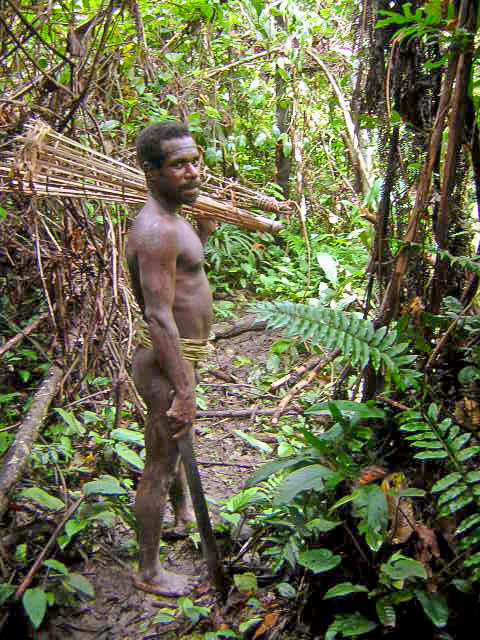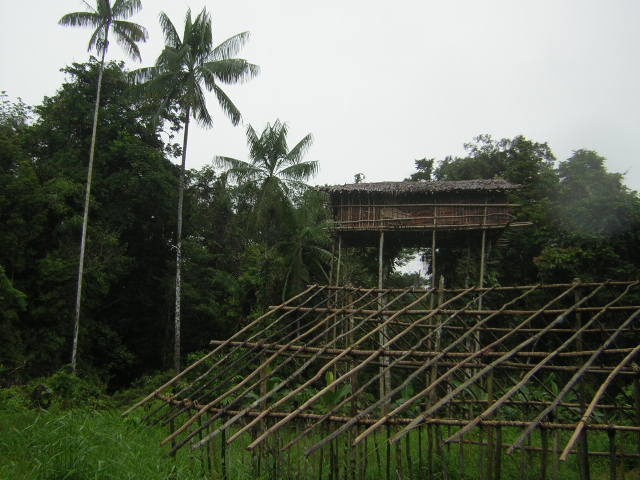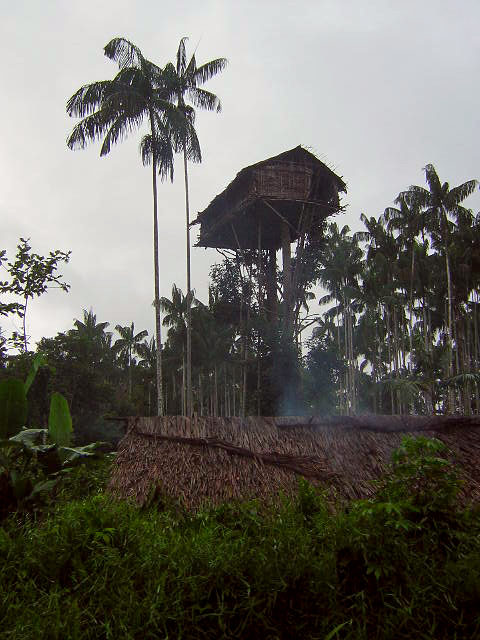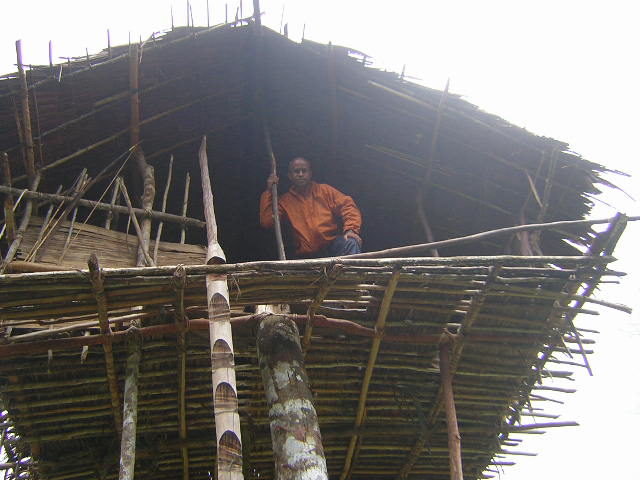Growing up as a kid you might have had a tree house, or maybe just dreamed of having one..; others made elaborate tree structures.
While these tree houses were something temporary to play in during the day, could you imagine living in one all the time? This means there must be a restroom, perhaps a kitchen, and a room to sleep in if you’re going to be living in it for the rest of your life, right?
Due to their lack of contact with the outside world, they remain something of a mystery; all experts know of them are the traditions they’ve displayed since the 1970’s. Allegedly the Korowai were regular victims of headhunting raids by Citak tribes up until the 1960’s. The last attack known is believed to have happened as late as 1966. Perhaps it was fear of raiders from other tribes that drove the Korowai into the trees in the first place.

There is a small village of people named the Korowai Tribe that live in Papua New Guinea, Indonesia. This group of people actually live in the houses that they’ve built in trees. These trees measure anywhere between 6 to 12 meters, however, some are as tall as 35 meters from the ground. Most of the houses there are built in one tree, but some people have expanded their homes into several trees.
According to scientists, a sturdy Banyan tree is usually picked in order to serve as the central pole. The top of the tree is removed; from there the floor is made and framed from branches. The frame is first constructed out of the branches and then covered with sago palm. The walls and the roof are made from the same leaves that the frame is made out of. They are then fastened together by rattan bindings.
The floor is obviously made of stronger materials so that people can walk on it without the fear of falling right through. The floor must extremely sturdy, as usually each house has about a dozen people living in it at one time.

A dry tree trunk with notches in it is hung from the bottom of the tree house in order to get up to and down from the house. The ladder is not fastened as tightly and will shake when a person walks up and down on it. If a person is visiting, the owners of the tree house will warn the visitor to take special care in watching their step as they make their way up or down.

Based on estimates, it is believed that there are between 2500 and 4000 indigenous Korowai people. It is difficult to get an exact number since the younger people move toward the villages along the banks of the Becking and Eilanden River.

These people are generally hunter-gatherers. They are people who take family very seriously, as they are valuable to each other. In order to survive, they must share everything they hunt or gather, giving them a strong sense of family values. The first ever encounter between the tribe and outside humans was when the missionary Johannes Veldhuizen met them on October 4, 1978. This was set up by one of the members of another tribe who had told Veldhuizen that there were other people living downstream of the Becking River.
